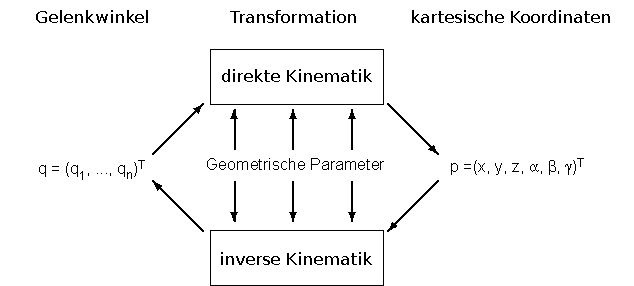Direct kinematics
The direct kinematics , forward kinematics or forward transformation is a term used in robotics . It deals with the question of how from the joint angles of the arm members of a robot , the pose ( position and orientation ) of the end effector (ger .: Tool Center Point, TCP) can be determined with respect to the base coordinate system (UCS). It is the factual counterpart to inverse kinematics .
In serial arrangements of structural components and joints, such as. B. in many industrial robots, the direct kinematics can be calculated by a simple matrix multiplication of the Denavit-Hartenberg matrices (see Denavit-Hartenberg transformation ):
With the help of this matrix, the position and orientation of the TCP coordinate system can now be expressed relative to the base coordinate system, which is equivalent to solving the direct kinematic problem.
This calculation can be carried out analytically and thus also in real time on machine controls. For machines or robots with a parallel kinematic structure that cannot be described by Denavit-Hartenberg parameters, an analytical solution of direct kinematics is generally not possible. Analytical solutions only exist here under strict geometric conditions.
The following picture tries to clarify the relationships:
It should be noted that a one-to-one mapping is only possible if the number of parameters is the same (i.e. usually 6). Otherwise one speaks of redundant kinematics.



